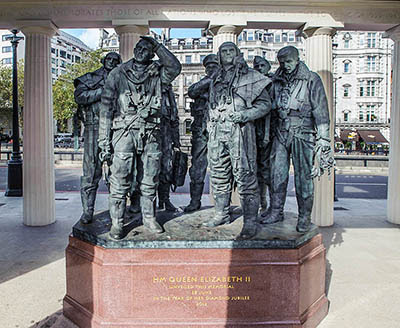March 13, 1945 - Move to Wetzlar
After being processed through the Interrogation Centre at Oberursel, Allied airmen were moved to the main transit camp at Wetzlar, about 50 km to the north.
On arrival at the main camp in Wetzlar, each prisoner received a hot shower and would subsequently be permitted one per week. While in the past, each new arrival was equipped with a Red Cross ‘captive case’ containing clothing, shoes and a set of toiletries, by March 1945, these supplies had been seriously diminished. The prisoners had to make do with either the clothing they were wearing when they had been captured or the sparse selection of boots and uniforms available.
The main camp consisted of five barracks and one large bungalow which held the messes and store rooms. The capacity of the camp was 784 though tents were available in the event the number was exceeded. Two sleeping barracks held officers, two were for non-commissioned officers and the remaining one accommodated permanent camp staff and a medical inspection room.
Prisoners were housed in barracks of about fifty men in double bunks. Beds had a mattress filled with wood shavings and a pillow and each barrack also had wash rooms with basins and running cold water. Hot water was generally available during limited times each day. Prisoners shared a ten-seat outdoor latrine and ‘satisfactory toilets of the modern flush type.’
The camp was bounded by two parallel 12’ high barbed-wire fences, ten feet apart and separated by a trench. Watch towers were spaced at 100 metre intervals and trained dogs prowled the outer boundaries.
Prisoners were typically held at the transit camp at Wetzlar for three to thirty days. When enough prisoners had accumulated, groups of approximately ninety men would be transferred to rail to a Luftwaffe permanent camp.
On arrival at the main camp in Wetzlar, each prisoner received a hot shower and would subsequently be permitted one per week. While in the past, each new arrival was equipped with a Red Cross ‘captive case’ containing clothing, shoes and a set of toiletries, by March 1945, these supplies had been seriously diminished. The prisoners had to make do with either the clothing they were wearing when they had been captured or the sparse selection of boots and uniforms available.
The main camp consisted of five barracks and one large bungalow which held the messes and store rooms. The capacity of the camp was 784 though tents were available in the event the number was exceeded. Two sleeping barracks held officers, two were for non-commissioned officers and the remaining one accommodated permanent camp staff and a medical inspection room.
Prisoners were housed in barracks of about fifty men in double bunks. Beds had a mattress filled with wood shavings and a pillow and each barrack also had wash rooms with basins and running cold water. Hot water was generally available during limited times each day. Prisoners shared a ten-seat outdoor latrine and ‘satisfactory toilets of the modern flush type.’
The camp was bounded by two parallel 12’ high barbed-wire fences, ten feet apart and separated by a trench. Watch towers were spaced at 100 metre intervals and trained dogs prowled the outer boundaries.
Prisoners were typically held at the transit camp at Wetzlar for three to thirty days. When enough prisoners had accumulated, groups of approximately ninety men would be transferred to rail to a Luftwaffe permanent camp.

Comments
Post a Comment